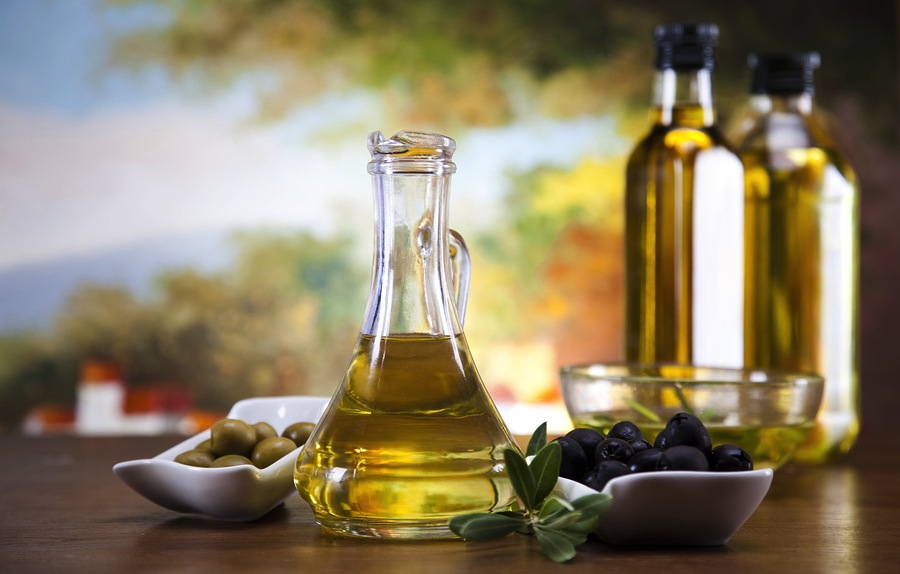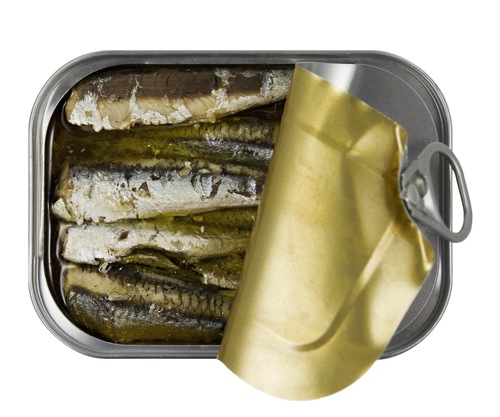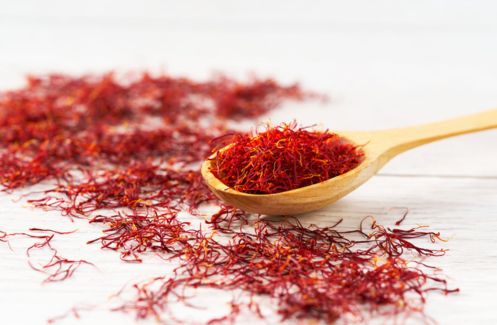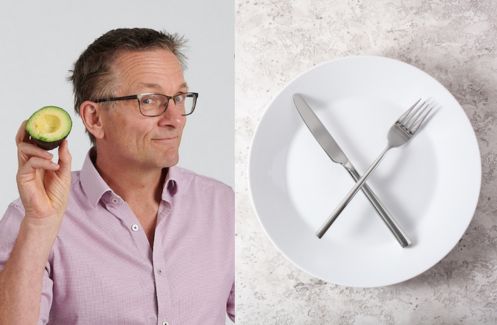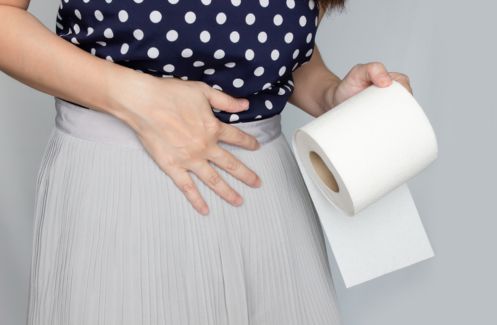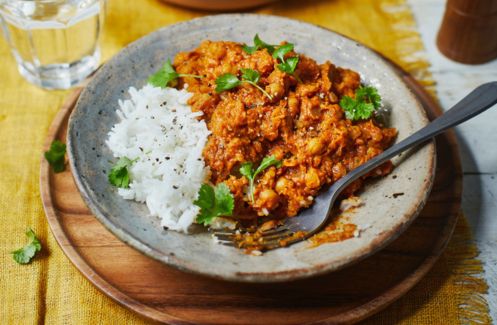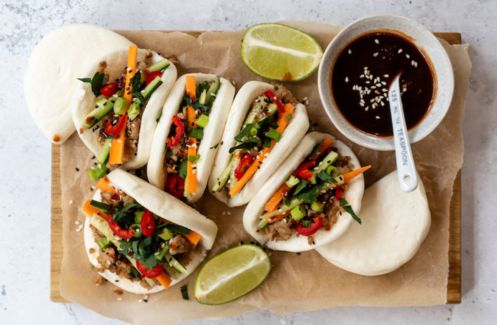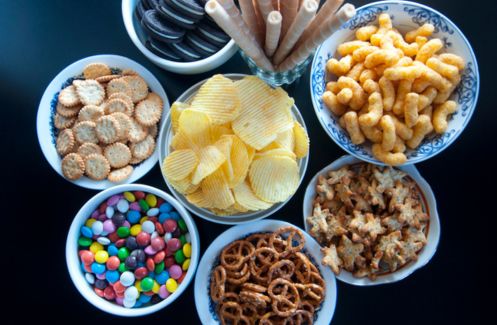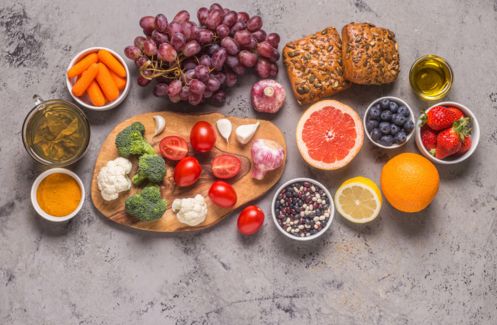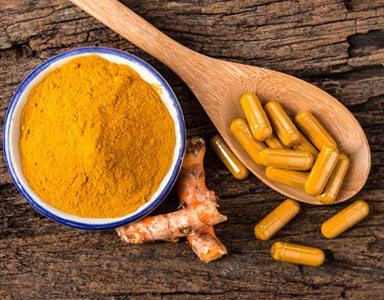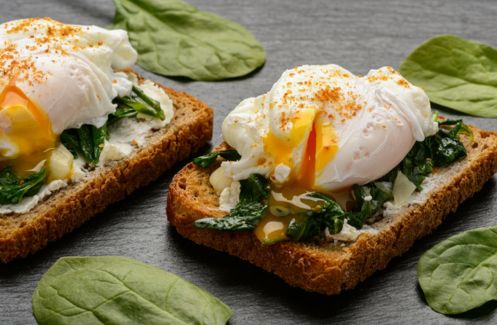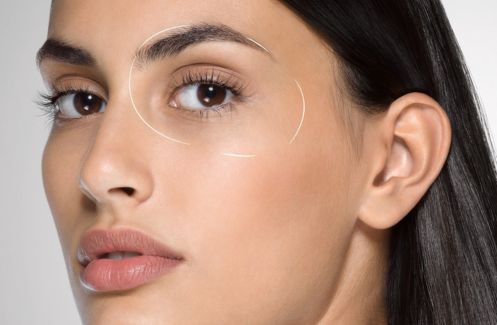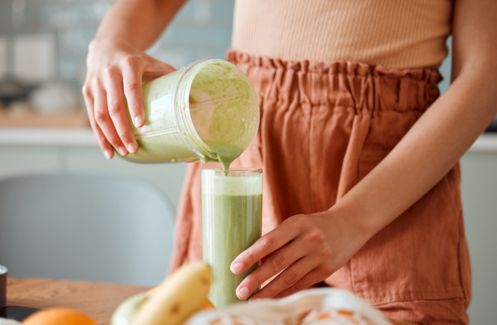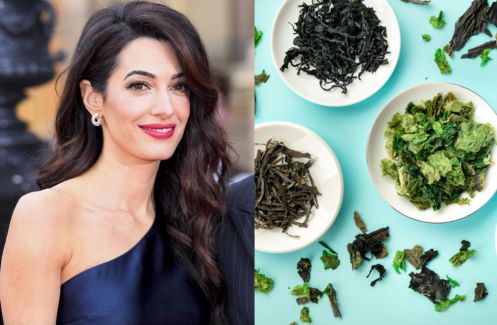Last week cardiologist Aseem Malhotra said saturated fat doesn’t play as big a part in heart disease as previously thought. Confused? A bit. Dietician Claire Donnelly has all you need to know about the facts on fats
Fat. As in the substance we eat. The Miley Cyrus at the VMSa of the nutrition world in terms of controversy and debate. This was evident last week. You may have picked up the media hoopla that emerged when an opinion article by cardiologist, Dr Aseem Malhotra was published in the British Medical Journal (BMJ). In addition the government announced the latest in its series of public health pledges with food manufacturers and supermarkets, to cut the saturated fat in chocolate bars and other food products.
In the BMJ article, Dr Malhotra claimed that saturated fat may not play a key role in increasing heart attack and stroke. Such a viewpoint opposes established dietary advice and guidelines. He claimed current advice has paradoxically led to a higher risk of obesity and heart disease. The effectiveness of the cholesterol-lowering drugs called statins was also challenged. I assure you this is not a cue to start chomping on blocks of cheese or to deep-fry a chocolate bar.
Unsurprisingly Dr Malhorta’s article catalysed a social media storm. This isn’t the platform to explore such a controversial topic which involves complex and challenging science. To add further to the complexity, genetics also has a powerful factor to play in heart health. Suffice to say nutrition science is in constant evolution as it untangles new scientific findings and decides on their implications regarding dietary advice for the population.
But what we will do is step back from the fray and focus on the fat facts.
FACT ONE: Excess intake of saturated fats and trans fats increases the ‘bad cholesterol’.
This is because the liver converts saturated fat into cholesterol. The latter in turn increases the risk of heart attack, stroke and a narrowing of the arteries in the heart due to deposits of a fatty plaque (known as atherosclerosis). As Professor Peter Weissburg, Medical Director at the British Heart Foundation stated, ‘People with highest cholesterol levels are at highest risk of a heart attack and it’s also clear that lowering cholesterol, by whatever means, lowers risk.’
FACT TWO: Dietary guidelines are founded on careful scrutiny of credible scientific evidence.
The constant theme of such guidelines has been to reduce saturated fat consumption. Consequently as Professor David Richmond Sullivan highlighted, rates of cardiovascular disease have decreased in the last half century in many Western countries.
Unfortunately some of last week’s media reports on Dr Malhotra’s article were misleading. One paper’s front page headline in bold screamed: ‘Eating fat is good for you’. This sensationalism gave the impression that new dietary guidelines had been produced. They haven’t. The current dietary guidelines on fats remain unchanged. More on these later. Another paper claimed that heart disease can be prevented by a diet high in fat. Misinterpretation and over-generalistion to say the least.
This article was Dr Malhotra’s opinion based on his knowledge and experience. No new evidence has emerged to support his arguments. However it is fair to say Dr Malhotra did vocalise the growing concern about the detrimental implications of excess refined carbs and sugar.
A leading researcher, Dr Frank Hu, professor of nutrition and epidemiology at the Harvard School of Public Health, has said the overemphasis on reducing fat has led to increased intakes of refined carbohydrates and sugar. Such a shift may have contributed to the obesity and diabetes epidemics. Likewise Robert Lustig, an American endocrinologist blames the glut of high-fructose corn syrup in processed foods.
It is due to the loss of taste and texture after fat is removed that low-fat or fat-free foods, receive additional dollops of sugar and high glycaemic refined carbohydrates. These drive the blood sugar up and may lead to a situation where the cells in the body are unable to properly use the hormone called insulin. This state is called insulin resistance.
Consequently increasing scientific evidence suggests sugar is responsible for metabolic syndrome. This is a combination of Type 2 diabetes, high blood pressure, obesity and increased levels of ‘bad cholesterol, plus another type of harmful blood fat called triglycerides. Metabolic syndrome increases the risk of heart disease and stroke. Hence Professor John Ashton, President of The Faculty of Public Health, has said food manufacturers also need to lower the sugar and salt content of low fat foods.
WHAT CAN I EAT?
Focusing on the here and now, let’s understand fats. We’re going to look at the different types of fat and where they are found.
Firstly fats play an important role in maintaining good health. They provide us with energy and essential fatty acids. Some fats make up cell membranes, while others get to be transformed into biologically active substances such as vitamin D. Furthermore fats are carriers for the fat-soluble vitamins (A,D,E, and K). If you try to remove too much fat from your diet you could become deficient in the fat-soluble vitamins or essential fatty acids. The latter are explained further below.
At a population level, the Department of Health recommends that total fat intake should be a maximum of 33 per cent of our total calories for the day. This means no more than 70 grams of fat a day for the average woman (this is based on an energy intake of 1900 calories). For the average man the limit is 92 grams of total fat daily (based on an energy intake of 2500 calories). Remember fats are high in calories with 9 calories for every 1 gram of any fat or oil. Even one tablespoon of olive oil gives us 135 calories. So don’t go overboard on the healthy fats. It’s that crucial PC word again: Portion Control.
WHICH TYPE?
As you know some fats are better for our health than others. Their building blocks are different types of fatty acids which can be classified as saturated, monounsaturated or polyunsaturated.
SATURATED FAT
It’s the solid type of fat found in butter, lard, pies, cakes, biscuits, fatty cuts of meat, sausages and bacon, full fat cheese and cream, coconut oil and palm oil. We’ve already talked about why excess saturated fat is harmful to the body. The average man and woman should eat no more than 30 grams and 20 grams respectively of saturated fat each day. Or less than 10 per cent of your calories for the day. Remember these figures are not a target – you can have less!
If you love the taste of butter or ghee, use these foods intelligently. For example a 10 gram portion of butter (roughly equivalent to two teaspoons, which should be enough for two slices of bread) has 75 calories and 8.3 grams total fat, of which 4.9 grams is saturated fat. If you love to use butter in baking, again practice portion control. So don’t scoff all the freshly baked scones in one sitting. Also switch to reduced fat milk, cheese and yogurts. Select lean cuts of meat and mince and trim the fat.
TRANS FATS
These artificial fats are made when vegetable oils are pumped with hydrogen (by an industrial process called hydrogenation) to produce solid fat. The finished product is used for frying or as an ingredient in processed foods, such as cakes, pastries and biscuits.
Trans fats have a detrimental double whammy effect on the body. They not only increase bad LDL-cholesterol, but also reduce the good HDL-cholesterol. The World Health Organisation has called them toxic and several countries have banned them.
If a food label indicates ‘hydrogenated vegetable oil’, put the product back on the shelf and step away. This indicates the presence of trans fat. So start label reading. Also reduce the number of takeaway foods you eat, as partially hydrogenated vegetable oils may be used in commercial frying.
In the UK trans fats have not been banned. Instead the food industry has undertaken a voluntary pledge to remove them from the manufacturing process. However there is concern about unregulated food manufacturers in low income areas who may supply cheap food using trans fats. The latest survey of food consumption in the UK, suggested that average adult intakes of trans fats represented 0.7 per cent of our total daily calories. This is below the limit set of 2 per cent.
HEALTHIER DIETARY FATS
We should be replacing saturated fat with moderate amounts of monounsaturated fats and polyunsaturated fats. These can help reduce harmful cholesterol thus lowering your risk of heart disease.
MONOUNSATURATED FATS (MUFAs)
These are found in olive oil, rapeseed oil, avocados and some nuts and seeds including almonds, pistachios and sunflower seeds. Ideal for salad dressings, olive and rapeseed oils are concentrated sources of a MUFA called oleic acid. It is thought MUFAs promote the healthier type of cholesterol in our blood called HDL. MUFAs should form 12 per cent of our total daily energy (that’s roughly 25g and 33g for the average woman and man as described above).
POLYUNSATURATED FATS (PUFAs)
These are divided into omega-3 or omega-6 fatty acids. Food sources include sunflower oil, corn oil, soya oil, rapeseed oil, nuts and seeds such as walnuts and chia seeds and spreads made from these oils. Research has shown that replacing saturated fats with polyunsaturated fats reduces the risk of heart disease.
ESSENTIAL FATTY ACIDS
The principal PUFAs, linoleic (omega-6) and alpha-linolenic acid (omega-3) are called essential fatty acids (EFAs). Why essential? They need to be supplied by the foods we eat, as the body lacks the enzyme to make them. Linoleic and alpha- linolenic acid are found in plant oils (sesame, sunflower, corn, walnut, linseed) and spreads made from them, plus nuts and seeds. These two key EFAs are involved with immunity, neural development plus inflammatory processes.
EPA (eicosapentaenoic acid) and DHA (docosahexaenoic acid) are made from alpha linolenic acid. EPA and DHA can also be sourced from oily fish, fish oil supplements and meat or eggs of animals fed with omega 3 fatty acids. Arachidonic acid is made from linoleic acid. Food sources of arachidonic acid include a small amount in meat (especially pork and the dark meat from chicken and turkey) and in oily fish.
The heart-health benefits of omega-3 fatty acids (EPA and DHA)
It is thought the omega-3 fatty acids EPA and DHA may have a role to play in preventing heart disease and research is on-going. Meanwhile the Department of Health recommends we should try to eat 1 portion (140g) of oily fish each week. This includes salmon, fresh tuna, sardines, mackerel and herring. Even shellfish has small amounts of omega-3 fatty acids. If you’ve suffered a heart attack, two portions of oily fish a week are recommended. Pregnant women should not eat more than two portions of oily fish a week due to potential harmful pollutants such as dioxins and PCBs (polychlorinated biphenyls).
For non-fish eaters, the body can covert the plant-based alpha-Linolenic acid (omega-3) in flaxseed, flax oil and walnuts into EPA. However the conversion to DHA is considered less efficient.
In the UK intakes of omega-6 fatty acids are close to the recommended 6.5% of dietary energy. However intakes of omega-3 fatty acids found in fish oils are low compared to recommendations. So we need to eat more oily fish.
BEST FOR COOKING
Think of your heart health and your waistline by opting to grill, microwave, poach, bake or steam. It’s best to relegate frying and roasting to treat status only and use a non-stick pan. Canola oil which is rich in MUFAs has a high smoke point of 468 degrees fahrenheit. This means it can be heated to a high temperature before it starts to smoke and break down. So canola oil can be used for stir-frying, sautéing and even baking. Olive oil is also an option when using heat, but be aware it’s smoke point is lower at 428 degrees fahrenheit. You can buy olive oil in the spray bottles which is great for portion control. Rapeseed oil also has a higher smoking point than many oils so can be used to grill, sauté or stir-fry.
Coconut oil …the jury is still out on this one and it shall be discussed in further detail at a later stage. Yes, it doesn’t break down at high temperature so could be used for frying. However coconut oil contains 86 per cent saturated fat, of which 60 per cent of the saturated fatty acids are medium chain in structure. Bear with me on this technical bit. The theory suggests that medium chain saturated fatty acids don’t build up in the blood vessels and lead to heart problems, unlike the long chain saturated fatty acids. However there is currently conflict within nutrition science on how coconut oil and medium chain saturated fatty acids impact heart health. So what do you do? Follow current dietary guidelines which recommend keeping saturated fat to under 10 per cent of your total calories for the day as discussed above. Despite the marketing hype, moderation would seem to be the prudent approach when it comes to coconut oil.
BEST FOR SALAD DRESSINGS
Heart-healthy oils which can be used in salad dressings and dips include flaxseed, walnut, hemp and extra virgin olive oils. It’s best to avoid heating these oils. If a product is described as cold pressed this means the oil is obtained at temperatures below 49 degrees centigrade. This is reputed to retain the flavour, aroma and nutritional value of the oil.
BEST FOR SPREADS
The butter vs margarine debate is a contentious one. We could be here til Christmas discussing the pros and cons of each. We’ve already discussed butter above.
Moving on to spreads. Avoid products which have partial hydrogenated fat on the label as this indicates the presence of trans fats. Whether for use on bread or in baking, it’s important to look for spreads with
- no trans fats
- low saturated fat
- relatively higher amounts of PUFAs and MUFAs.
There are now lots of products available that fit this criteria, so it comes down to taste preferences.
Examples include :
• Flora.
10g (approximately two level teaspoons) has 40 calories; 4.5 gram fat which is made up of 2.5 gram of PUFAs, 1 gram of MUFAs and 1 gram saturated fat.
• Bertolli spread, made with olive oil.
10g delivers 54 calories, 6g fat of which 3.3g is MUFAs, 1.3g is PUFAs and 1.4g is saturated fat.
Both these products are suitable for baking.
Flora pro-activ light is another option to consider. 10g delivers 30 calories, 3.5g fat of which 1.5g is an omega-6 fatty acid, 0.3g is an omega-3 fatty acid, 0.8g is saturated fat. If you want an olivey taste, consider Bertolli olive light. Each 10g has 35 calories and 3.8g fat, of which 1.1g is saturated fat. However both these products cannot be used for baking so are best for sandwiches.
In terms of baking there is probably some trial and error involved until you find what product works for you. The heart-healthy oils described above can be used in baking. For cakes, brownies and muffins, it is reported that mixing half oil with a fruit puree such as apple, banana or prunes leads to good results. Grated citrus zest can also be added to add extra flavour when the fat is reduced. Another useful tip to reduce fat in baking is to use parchment paper to coat baking pans instead of butter or oil.
THE MEDITERRANEAN DIET : a great balance of good fats
One positive point that emerged from last week’s fat debate was the consensus on the life-enhancing benefits of the Mediterranean diet. It has been associated with a lower risk of heart disease, stroke, Type 2 diabetes and dementia. As Catherine Collins, RD, tweeted last week, Mediterranean style eating is the foundation for a healthy life.
Mediterranean-style diets are low in saturated fat but high in mono- and polyunsaturated fats. It involves eating olive oil, wholegrain cereals, nuts, fruit and vegetables, beans, moderate intakes of fish and dairy products, and a little lean meat. In addition a moderate intake of wine is advocated with meals. (If you want more information refer to this document).
So the take-home message is: eat real, whole foods. Avoid those containing hydrogenated oils, excess sugars and refined carbohydrates. Build more physical activity into your day. And remember that old adage about moderation and balance ….at the end of day food brings us enormous pleasure and is there to be enjoyed.
CLAIRE DONNELLY is a dietitian and has a masters degree in public health nutrition. She was the 2012 winner of the annual Caroline Walker essay in public health nutrition. Claire is passionate about health, nutrition and well-being, and is an advocate for lifelong learning.
Like this article? Sign up to our newsletter to get more articles like this delivered straight to your inbox.




